Ferdinand Hodler – The Painter Who Revolutionized Swiss Art
Ferdinand Hodler was one of the principal figures of 19th-century Swiss painting. Hodler worked in many styles during his life. Over the course of...
Louisa Mahoney 25 July 2024
Piero della Francesca was not only an accomplished artist of the Early Renaissance, but also one of the greatest mathematicians of his day. His works reveal his innovative mind and his meticulous understanding of space, perspective, and proportion. Piero della Francesca was at the cutting edge of Humanism, writing extensively on the topics of arithmetic and geometry. His transfixing compositions built on geometric principles demonstrate his mathematical prowess and his sensibility of the classical past.
Piero della Francesca was born around the year 1412 in the Tuscan town of Borgo Sansepolcro and spent his life exploring how to represent a three-dimensional space on a two-dimensional support. Known for his cool color palette and pastel hues, the artist marked the transition from tempera to oil painting in Italy. His images are replete with hypnotic, dream-like figures of a sculptural quality. His patrons were among the most powerful in Italy, including the Duke of Urbino, Sigismondo Malatesta in Rimini, and Pope Nicholas V in Rome.
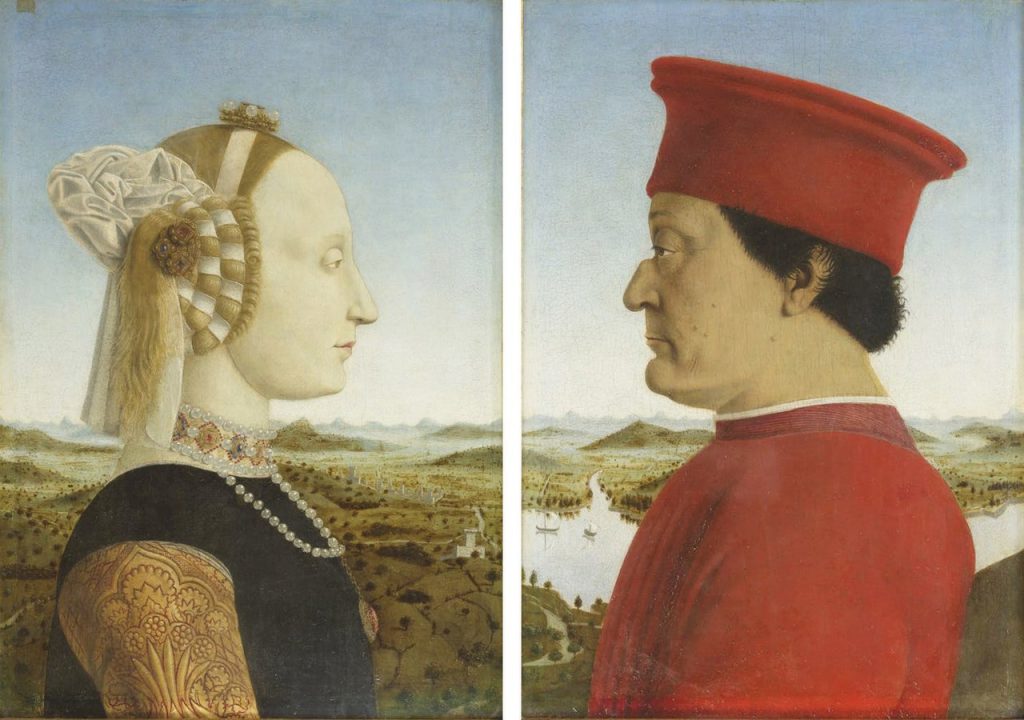
Piero della Francesca, The Duke and Duchess of Urbino Federico da Montefeltro and Battista Sforza, 1473-1475, Uffizi Gallery, Florence, Italy. Wikimedia Commons (public domain).
In addition to his art, the artist dedicated his time to writing treatises on geometric solids (Five Regular Solids), abacus (Abacus Treatise), and the use of perspective in paintings (On Perspective). These three mathematical treatises reveal the artist’s deep understanding of Euclidean geometry. Indeed, most of his compositions are coordinated by geometrical schemes that correspond to his mathematical theories. His approach to drawing involved organizing his visual space by laying down a geometric floor plan with a horizon, diagonals, and visual rays.1
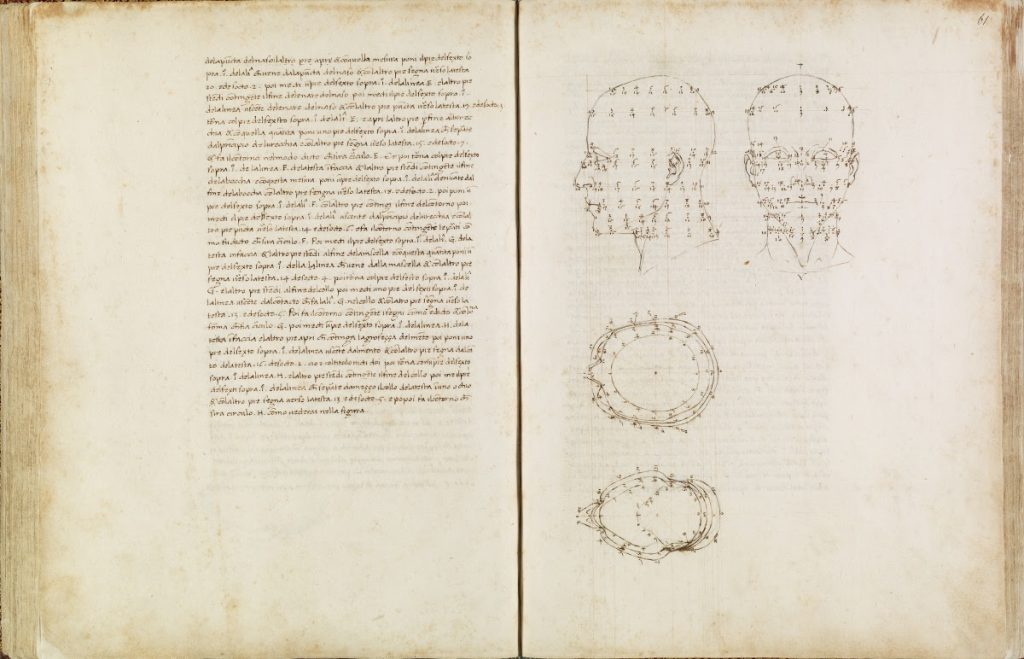
Piero della Francesca, De Prospectiva Pingendi, 1480, Palatina Library, Parma, Italy. Google Arts and Culture.
Piero della Francesca was working at a time when art was returning to an imitation of nature. No longer medieval and not yet modern, the Italian Quattrocento was an important historical turning point that laid the foundations for the greater European Renaissance. In Piero della Francesca’s work, we find a seamless blend of art, religion, and science. Christian Platonist tradition was an intellectual subculture that attempted to reconcile Greek philosophy and science with Christian belief. The Platonic view of ideal proportions highlighted the role of numbers in the universe. Indeed, there is an undeniable mathematical purity and visual continuum across Piero della Francesca’s works.
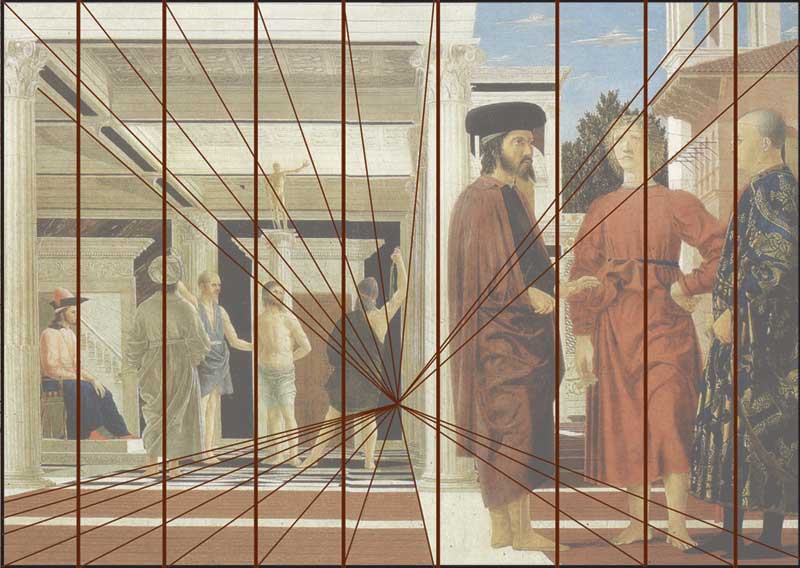
Piero della Francesca, Flagellation of Christ, 1455-1460, Galleria Nazionale delle Marche, Urbino, Italy. Reproductions d’Oeuvres.
Piero della Francesca embraced the mathematical universe around him and made it the basis for his artistic design. By producing coherent, unified compositions based on mathematical principles, the artist made a major advance in the representation of forms in the Early Renaissance. Applying mathematics to his art, he made painting into a science.
The intellectual, theological, and philosophical problems that filled his mind were the same that occupied the humanistic despots […]. Nothing would explain more directly the powerful intellectual grip that holds our attention in Piero’s every painted work.
Piero della Francesca
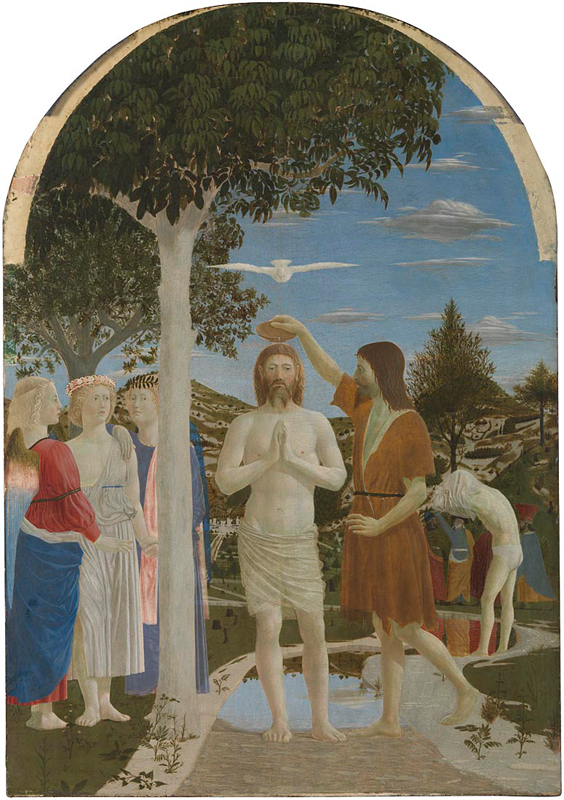
Piero della Francesca, The Baptism of Christ c. 1460, National Gallery, London, UK. Museum’s website.
The product of a rigorous organization of pictorial space, The Baptism of Christ attests to Piero della Francesca’s mathematical approach to painting and offers an innovative interpretation of a frequently represented Biblical scene. Begun in 1438 for a monumental Gothic-style polyptych, it is thought to be artist’s first major work. Perhaps more than any other of his paintings, this work reveals the emerging artistic principle of achieving an ordered whole through the relationships of space by means of line, shape, and color.
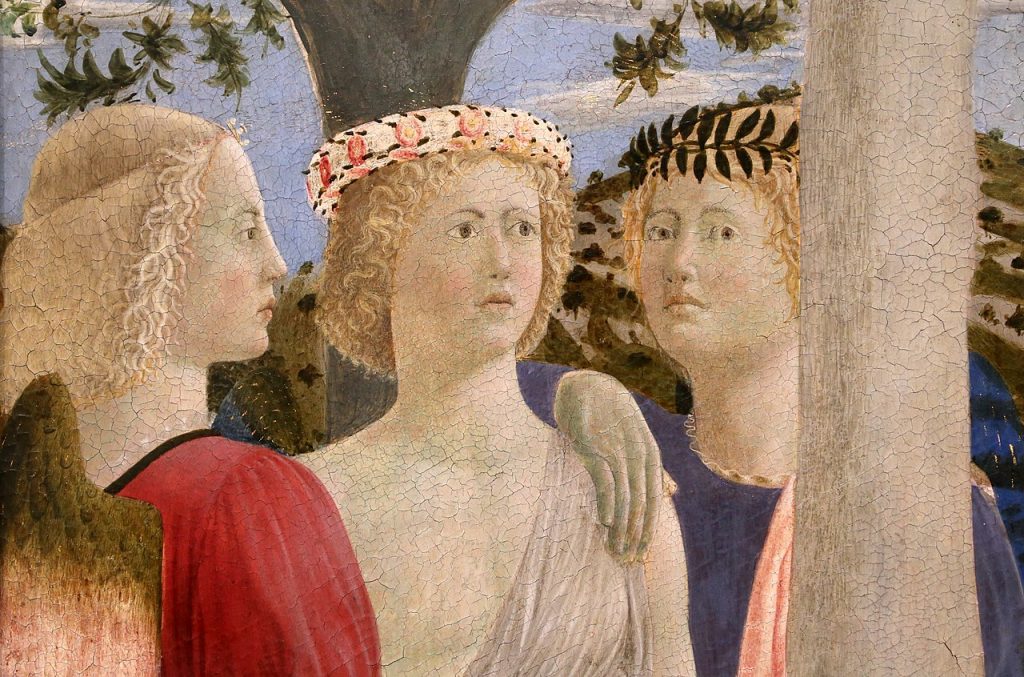
Piero della Francesca, The Baptism of Christ c. 1460, National Gallery, London, UK. Detail. Wikimedia Commons (public domain).
The protagonists of the composition exemplify a gravitas that would become a defining attribute of Piero della Francesca’s subjects. Christ is the central figure, his eyes downcast, as John the Baptist performs the Baptismal rite. To the left, three attendant angels showcase a multitude of colors—Piero della Francesca’s first surviving use of the cangiante technique. Also present are the Holy Spirit in the form of a dove, a catechumen, and elder citizens of Jerusalem. Set in a vast sloping landscape, the scene is bathed in a clear morning light. Like the majority of artist’s works, this painting evokes an unexplainable stillness.
Piero della Francesca was a Christian, a mathematician, and an artist. It is the balance in him, his integritas, his wholeness and his holiness, which makes him so peculiarly attractive to us; a steady light above our dark turbulence, a certain star, knowing his way with such assurance.
Piero della Francesca and the Twentieth Century
In the Baptism, the artist gives landscape a new importance. Before this point in the history of art, landscape had played a secondary role in painting. His work is one of the first altarpieces to show large-scale figures in a consistent landscape with no pictorial barriers between the painted scene and the observer. He was among the group of artists of his time who united man with his surroundings and portrayed the two existing together harmoniously.
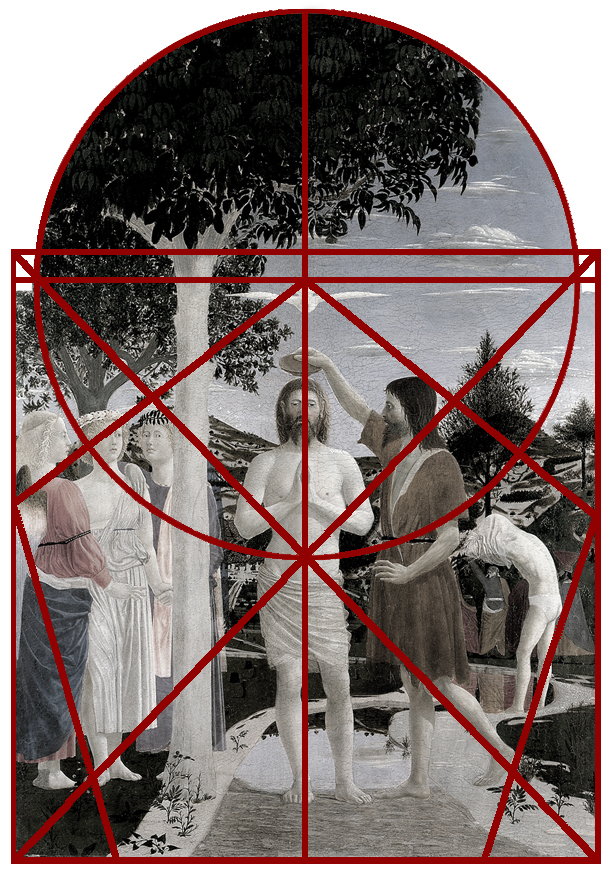
Schema of Piero della Francesca’s The Baptism of Christ c. 1460, National Gallery, London, UK. Wikimedia Commons (public domain).
In Piero della Francesca’s Baptism, mathematical symbolism reinforces the liturgical significance of the scene. The composition is comprised of two geometric shapes: a rectangle and a semicircle. The outstretched wings of the dove of the Holy Spirit are perfectly aligned with the top of the rectangle and the figure of Christ stands at the point at which a vertical line bisects the panel. If we were to construct an equilateral triangle using the top side of the rectangle, we would find that its apex falls at the point where the central vertical line passes through Christ’s right foot. The center of the triangle rests precisely at the fingertips of Christ’s hands raised in prayer. It may be deduced that the artist calculated this triangle to imply the Trinitarian associations to the Holy Spirit’s descent at the moment of Christ’s baptism.
It has been suggested that the artist implemented Euclid’s formula to inscribe a circle and an equilateral pentagon on the triangle. According to Marilyn Aronberg Lavin, the artist might have been referring to Christ’s five wounds through the symbolism of the pentagon.2 Indeed, Christ’s wounds would have been an appropriate symbol to represent the Baptism as the beginning of Christ’s passion. The geometric construction of the painting adds stability to the landscape while providing a mathematical solution to denote Christ as the center of the Universe as well as an integral part of the Trinity.
He was an artist as a Christian humanist who bridged the sciences with the arts and religion and thus has become a figure who would seem relevant to many such encounters of art, religion, and science down through the centuries.
Piero’s Light
Piero della Francesca experimented with Leon Battista Alberti’s theories on perspective and vanishing points and embraced St. Augustine’s idea that physical light was an analogy for the mind seeing spiritual light. With its all-encompassing harmony, the essentials of Piero della Francesca’s art are all to be found in his Baptism of Christ. He has created man in unison with space, light, and air—with all of nature’s inanimate beauty. A real physical situation existing in space and time.
To visit this artist today, you must be willing to get off the beaten path and rediscover him in his own territory. His most important works can be visited on what is known as the Piero Trail, which begins in Florence or Bologna, continues to Arezzo, Monterchi, and Sansepolcro, and—for the most adventurous—branches off to Perugia, Urbino, and Rimini.
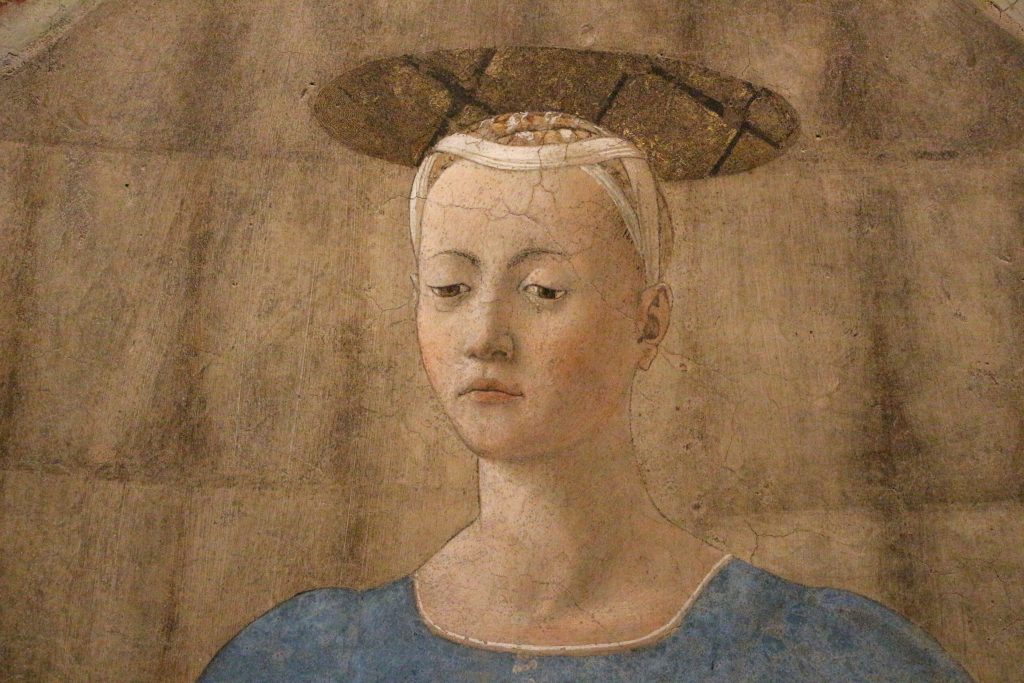
Piero della Francesca, Madonna del Parto, c. 1460, Monterchi, Italy. Detail. Wikimedia Commons (public domain).
Piero della Francesca became blind in old age, and in 1492, he died in his hometown of Sansepolcro, where he is buried. For centuries, the artist had fallen into obscurity only to be rediscovered in the 1850s. Despite his popularity, only sixteen of his works survive, making him one of the most enigmatic figures in the history of art. While Piero della Francesca’s works may be scarce in number, it is impossible not to be moved by their commanding presence and austere beauty.
Larry Witham: Piero’s Light, Pegasus Books, New York, 2014.
Marilyn Aronberg Lavin: Piero della Francesca, Harry N. Abrams, New York, 1992.
Anthony Bertram: “Piero della Francesca and the Twentieth Century” The Studio (1951), p. 120-123.
Larry Witham: Piero’s Light, Pegasus Books, New York, 2014.
Marilyn Aronberg Lavin: Piero della Francesca, Harry N. Abrams, New York. 1992.
Morris Kline: Mathematical Thought from Ancient to Modern Times, Oxford University Press, 1990.
DailyArt Magazine needs your support. Every contribution, however big or small, is very valuable for our future. Thanks to it, we will be able to sustain and grow the Magazine. Thank you for your help!